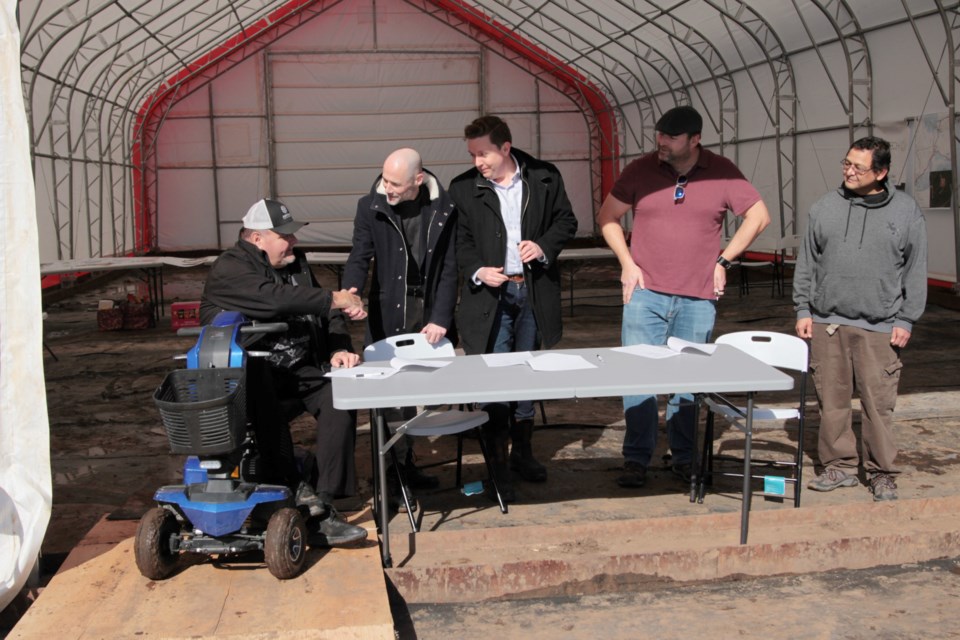HURKETT – A new facility planned to be constructed in Hurkett will turn unused biomaterial collected in the region into a renewable energy source.
An open house was held Wednesday at the site of the new facility to allow industry stakeholders and regional communities to learn about the project.
The new facility will come with a price tag of $50 million and will be in operation by 2025 when it will convert unused biomaterial into two types of renewable energy sources for the region.
Andrew White, CEO of CHAR Technologies Inc., one of the organizations partnering in the construction of the facility, said it will utilize a technology called high temperature pyrolysis, which heats wood up in the complete absence of oxygen.
“As we heat it up, we basically crack the wood into two products,” he said.
“One is a bio-coal, so that gets used for metallurgical coal replacement. The other is a gas that we can upgrade to renewable natural gas. It's completely interchangeable with natural gas, but it's made from renewable sources.”
The open house was also the site of the formal signing of the partnership between CHAR Technologies Inc. and Lake Nipigon Forest Management Inc. which builds on the foundation laid by a memorandum of understanding signed in April 2023.
Lake Nipigon Forest Management Inc. is a forest management co-operative comprised of four local First Nation communities that hold the sustainable forest license: Animbiigoo Zaagi’igan Anishinaabek, Bingwi Neyaashi Anishinaabek, Biinjitiwaabik Zaaging Anishinaabek, and Red Rock Indian Band.
The new partnership, called Lake Nipigon Forest Sustainable Energy Solutions, is a huge benefit to the four First Nation shareholders that make up LTFMI, according to Jordan Hatton, one of the directors of LNFMI.
“Currently, we manage one of the most productive forests in Ontario -- about a million hectares. And now we're moving into [renewable natural gas] and this is a huge opportunity for us to be able to clean up the forest, make clean renewable natural gas out of the material from the forest,” he said.
“And then we get a material that we can use to supplement coal in southern Ontario. So the communities are becoming part of the clean energy revolution while at the same time earning significant revenues, employment opportunities and contracting opportunities for its members.”
Frank Hardy, one of the directors of LNFMI, said that this partnership is very meaningful to him and to the four First Nation community shareholders.
“I just turned 60 years old, as a young guy, I've always been waiting for the First Nations to get opportunities like this and now it's happening. I think about my children, my grandchildren, the opportunities that they're going to have coming. It's fantastic,” he said.
“It's about time that stuff like this happens for the First Nations.”
